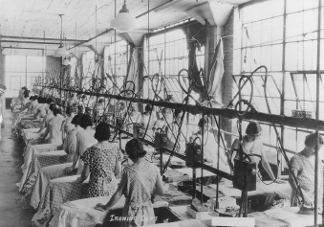RYDER, JAMES F. (7 Apr. 1826-2 June 1904), photographer locally best known for encouraging ARCHIBALD WILLARD† to paint The SPIRIT OF '76 and popularizing it through chromolithography, was born in Ithaca, N.Y. Inspired by the local daguerreotypist to purchase a camera, Ryder joined his establishment in 1847. In 1849, Chas. E. Johnson, a daguerreotypist from Cleveland, invited him to visit his studio. Ryder left Ithaca and became a traveling daguerreotypist, working in Kirtland, Painesville, CHAGRIN FALLS TOWNSHIP, and BEDFORD before settling in Elyria in 1850. Johnson asked Ryder to become manager/operator of his Cleveland studio, so for 2 years Ryder divided his time between Cleveland and Elyria.
In 1868, Ryder introduced negative retouching to the U.S., paying the passage for Prof. Karl Leutgib from the Munich Academy to teach him the new process. As a result, Ryder received an award at a photography show in Boston in 1869. In 1872, Archibald Willard sent 2 paintings to Ryder's shop to be framed. Ryder displayed the paintings, and they became so popular he decided to make chromolithograph copies of the works, which became bestsellers across the country. Ryder encouraged Willard to paint The Spirit of '76 for the Centennial Exhibition. Ryder also photographed several U.S. presidents, most notably Pres. Garfield. Retiring in 1894, he produced his autobiography, Voightlander and I, in 1902. This was one of few autobiographical accounts produced by a 19th-century photographer. Ryder married Susan Park in 1852; they had no children. Ryder died in Cleveland and was buried in LAKE VIEW CEMETERY.
Last Modified: 22 Jul 1997 01:35:06 PMRyder, James F. Voightlander and I (1902).
- Related Article(s)









